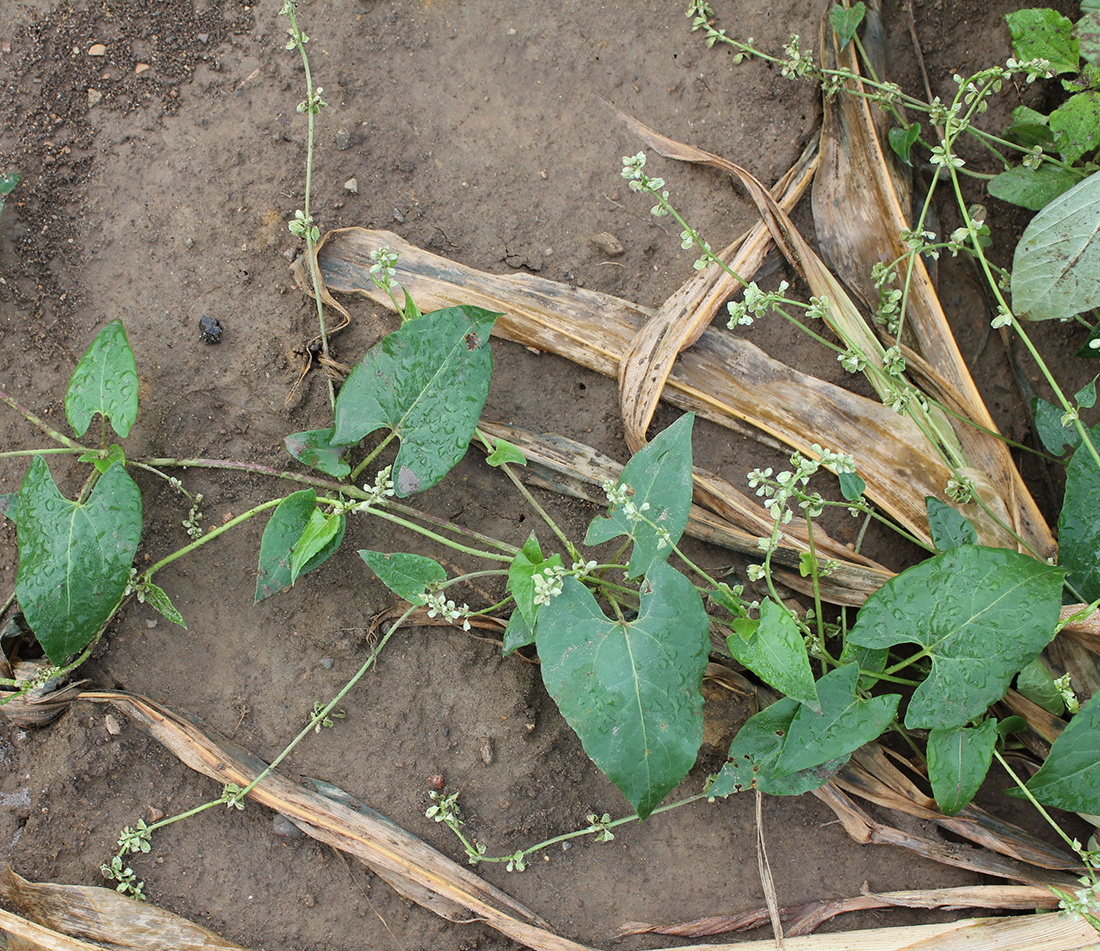Wild Buckwheat
- Smartweed (Polygonaceae family):
- Fallopia convolvulus (L.) Á. Löve
- EPPO Code:
- POLCO
- Other Names:
- Black bindweed, climbing bindweed, corn bindweed
Species information
- Lifecycle:
- Annual.
- Propagation:
- Reproduces only by seed.
- Emergence:
- One of the first annual broadleaf weeds to germinate and emerge in the spring.
- Habitat:
- Wild buckwheat is commonly found in cultivated fields throughout Ontario.
- Competitiveness:
- Agriculture and Agri-Food Canada research has shown that wild buckwheat densities of 20,000 plants/ac can result in 10–15% yield loss in corn and soybeans.
Identification clues
Seedling
- Cotyledons:
- Elongated with a rounded apex and attached directly to the stem.
- First leaves:
- Wild buckwheat’s first leaf is shaped like an arrowhead or spade with pointed basal lobes.
- Mature leaves:
- The mature leaves of wild buckwheat have an alternate leaf orientation. They are similar to younger leaves, but larger and with more prominent veins.
Mature plant
- Stems:
- The stems of wild buckwheat are long and slender. Spreading and vine-like, they wrap around other plants and objects. The stems have a membranous sheath, an ocrea, which surrounds each node.
- Flowers:
- Flowers consist of five small and greenish to white-pink sepals that are located at the tips of short branches or from leaf axils.
- Seeds:
- Dull black, 3 mm long and shaped like a CFL football.
- Roots:
- Fibrous.
Often mistaken for
I know it’s not Field and hedge bindweed because wild buckwheat has an ocrea that surrounds the leaf stem at each node and lacks the round, showy morning glory-like flowers of bindweed species.





Updated: August 16, 2023
Published: January 13, 2023